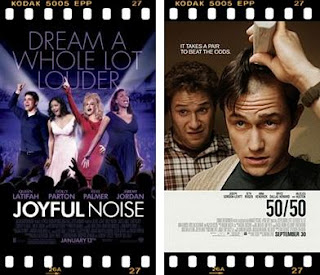These two highly enjoyable movies mark the start and end of the family life
cycle.
THE 5-YEAR ENGAGEMENT
tellingly describes the ups and downs that a young couple (Jason Segel
& Emily Blunt)go through from the time they decide to get engaged. In
the process of trying to strike a perfect balance and portray a picture of conjugal
bliss, juggling career aspirations, and dreams, they began to lose their passion
and personhood. In time, they found that the more they tried to be a couple –
doing couple things as and when expected – the greater their tension for
personal space. In the end, they separated just to recover the two individuals
who had initially come together because they were fascinated by each other’s
difference. (They met at a year-end costume party and were immediately drawn to
each other: the man dressed as a fluffy frumpy pink bunny, and the woman as
Princess Diana. How much more diverse can you get?)
On the other end of the spectrum, EVERYBODY’S FINE is an
endearing movie about a recently widowed middle-aged man (Robert De Niro) whose
four adult children conspired to hide the reality of their life struggles from him.
In the process, he was alienated from the children he boasted about. But as he
began to look at them as mere young children, he began to see their naivety and
vulnerability, and to bring their follies as well as his fantasies to an end. In
the end, his courage in facing reality with his children rallied the whole family
and strengthened their bonds.
Undeniably,
the underlying theme of both movies is the human tendency to sugar-coat our
life and family experiences.
From the young couple on a long threshold of marriage, to
the father struggling to connect with his grown children, when we avoid unpleasant conversations, even
arguments and confrontations, when we deny ourselves of expectations and
aspirations by living in another person’s shadow, cracks are bound to show up in
one way or another, and sooner or later.
There’s truly no better time to know who we really are than
before getting hitched and after a loved one is gone – by death, divorce or
desertion. After all, we are born single and will be single when we die. Singlehood
is a precious time to discover self, to discover an amazing relationship with a
living God, and to discover the ultimate meaning of life when you strip away
considerations like if you married, who you married, the quality of your
marriage, the children you have or not, etc. You begin to
see life simplified when it’s just about you, and what on earth you are doing
here.
Recently, a married friend asked me if it was possible for
Christian couples to be lovey-dovey, affectionate throughout their marriage or
if it was normal to expect decline. Coincidently,
this was brought up in a group discussion just a day before.
My simple reply to my married friend was to consider if the
couple allow each other space and time to grow spiritually and emotionally. Or
if they take the phrase ‘two become one’ wrongly and become
so enmeshed in their identities, personalities, preferences and choices that they
suppress, stunt, and stifle each other. In such a state, it’s
hard for anyone to contribute to the relationship in terms of spontaneity,
imagination, surprise and delight.
In Luke 17:1-3 Jesus issued a sombre
warning His disciples: “Things that cause people to stumble are bound to come, but woe to
anyone through whom they come.
It would be better for them to be thrown
into the sea with a millstone tied around their neck than to cause one of these
little ones to stumble. So
watch yourselves.” Married couples would do
well to apprehend this.
From
sizzle to fizzle, when routine replaces romantic impulses, when what is expected replaces
what you really feel like doing, and when familiarity replaces fascination, your
relationship will become as interesting as dried prunes.
I persuaded my friend that it takes two people in love with
God, who are continually renewed in His love and passion to bring passion and renewal
into their marriage. Even if it is a one-sided effort, improvements will be
seen as one draws on the enduring, immeasurable and indescribable love of God and
lives in the freedom and power of His love. One vibrant is better than none. If
it only takes a spark to get a fire going, then somebody has to light it first
for all to enjoy!
Funny moments from The Five-Year Engagement include a really cute Italian song, 'Cu Cu Ru Cu Cu Paloma' sung at a wedding; father of the engaged bride-to-be who keeps bringing a different Asian girlfriend to family events; the lure and drain of a sweet young fling for the engaged groom; and the energy of a high-end restaurant kitchen. I have watched De Niro's Everybody's Fine twice and will probably watch it again before it's due for return at the video shop.




